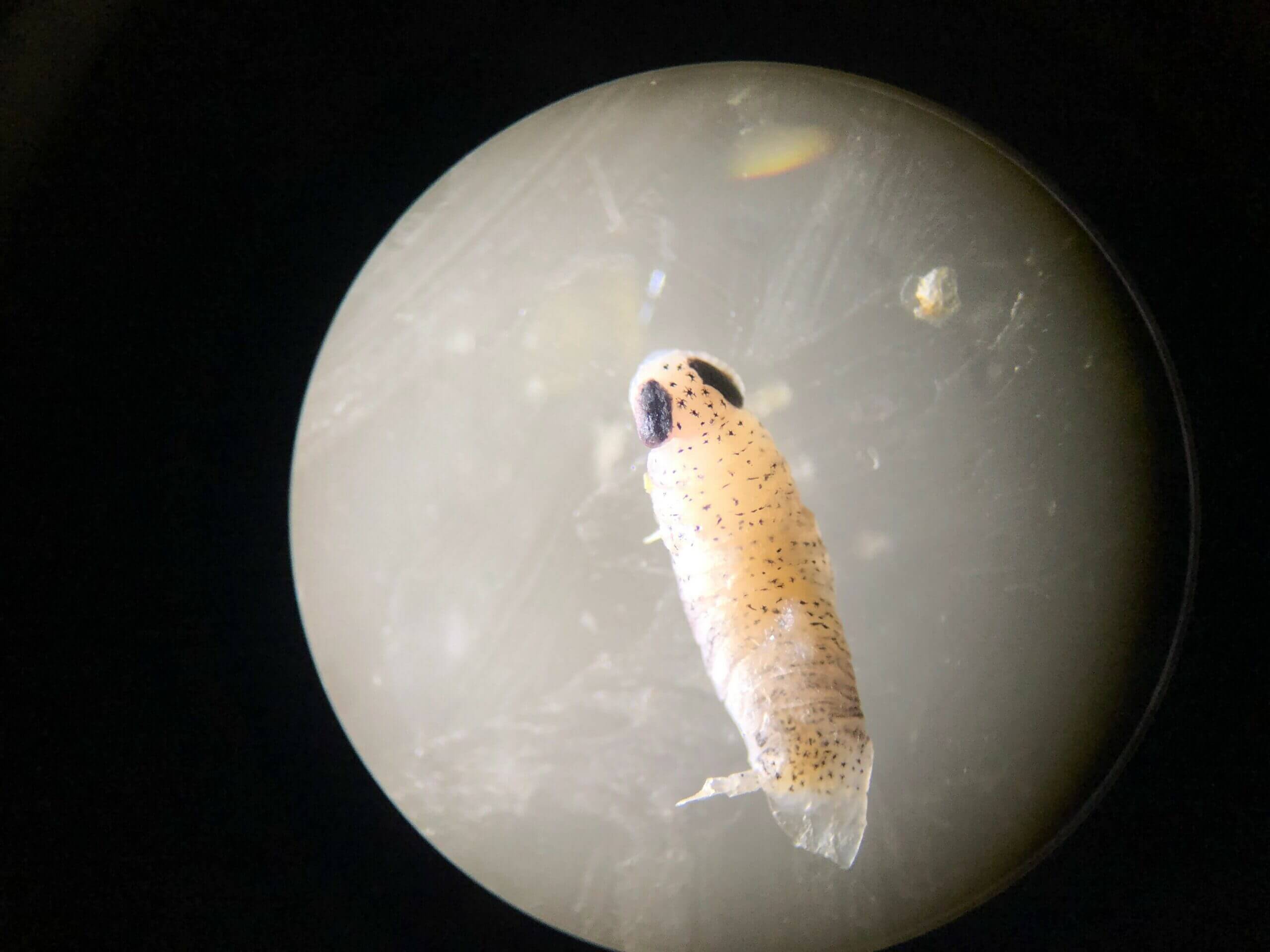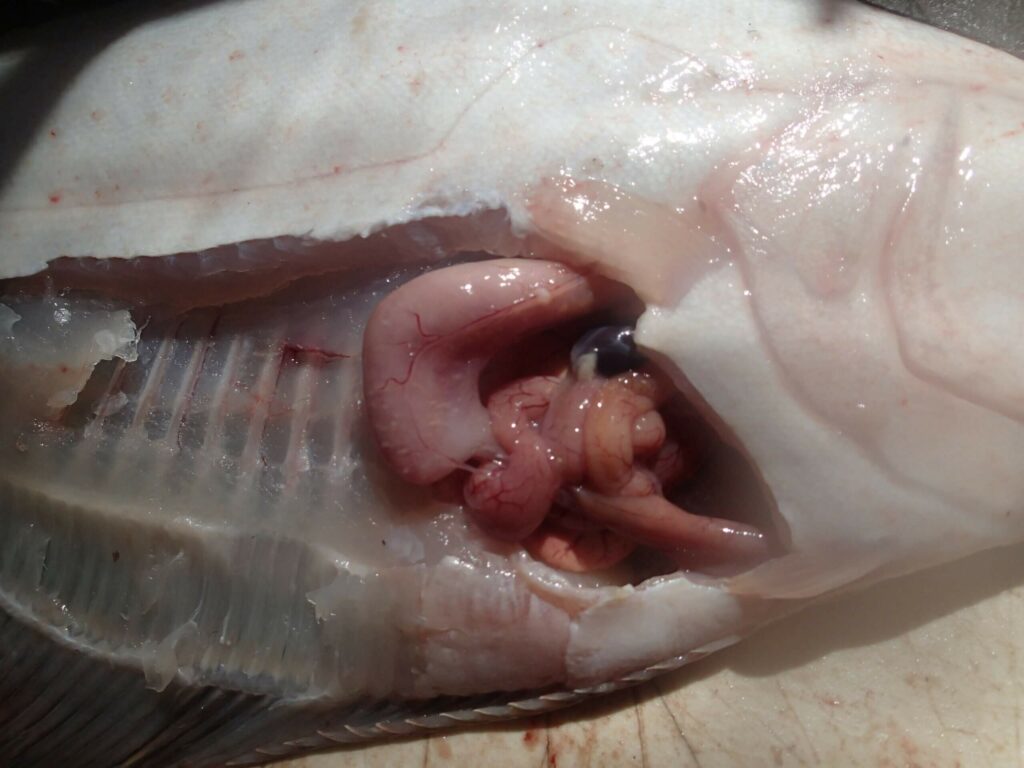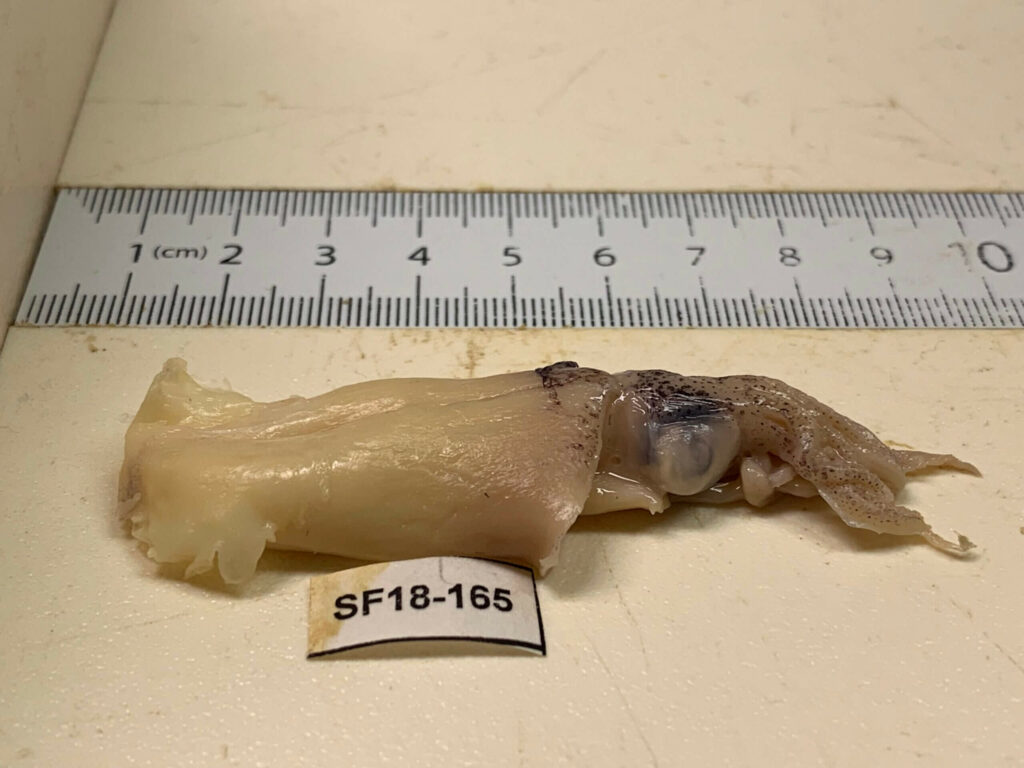
Cymothoidae spp.
The Bureau of Marine Fisheries initiated a diet composition study in October 2017. The project is a proactive response to expanding the knowledge and understanding of predator-prey interactions within New Jersey waters and the New York Bight.
The project is focused on nine recreational and commercially important species: Weakfish, Striped bass, summer flounder, black sea bass, tautog, Atlantic croaker, spot, bluefish, and spiny dogfish. Evidence has shown that these species may compete for similar prey items at some stage of their lives.¹

Methodology
Samples are collected aboard the NJ Ocean Trawl Survey. Each species is subsampled according to size and primary food source.¹ The retained samples are held on ice until they are brought back to the Nacote Creek Research Station for processing.
Each sample processed will be assigned a unique identification (ID) number, so that it came be catalogued. Additionally, length, weight, sex, and age structures (primarily scales or otoliths) are collected from each sample. After recording, the stomachs are removed and placed in a tissue fixative, which will stop any stomach acid from further digesting its content.
Once preserved, Stomachs are removed and individually weighed. All contents within the stomach are removed and analyzed based on the closest classification possible. Where applicable, individual contents are weighed, counted, and measured.

Results
Stomach contents are analyzed using standard practice.2 An Index of Relative Importance is calculated to take into account fish aggregates and prevent biases associated with prey cluster events.
As of 2021, 3,267 individual stomachs have been analyzed. Out of these, 1,276 stomachs have had identifiable prey items present. The top 5 prey items analyzed are: mysid shrimp, bay anchovy, Atlantic rock crab, Atlantic menhaden, and squid. Strong competition comparisons have been observed between bluefish and striped bass, spiny dogfish and striped bass, as well as spiny dogfish and weakfish. Temporal shifts have also been observed based on seasonal availability of prey items.
Data collected thus far has been promising in understanding predator-prey dynamics. This is an importance step towards ecosystem-based management, a promising approach to fisheries management. With the seemingly endless possibilities in diet analysis, one question comes to mind: who’s hungry for more?
Project Lead Contact Information/Designated Contact Person
Chad Power, Fisheries Biologist
Chad.Power@dep.nj.gov
609-748-2020
References
Smith, B.E., and Link, J.S. (2010). The Trophic Dynamics of 50 Finfish and 2 Squid Species on the Northeast US Continental Shelf. NOAA Technical Memorandum NMFS-NE-216.
Hyslop, E.J. (1980). Stomach Contents Analysis- A Review of methods and their applications. J.Fish. Biol, 1980(17), 411-429 pp.
VIMS Multispecies Research Group. 2018, January, 18. Fish food habits online data base.
Retrieved from http://www.vims.edu/fisheries/fishfood.
 Official Site of The State of New Jersey
Official Site of The State of New Jersey
